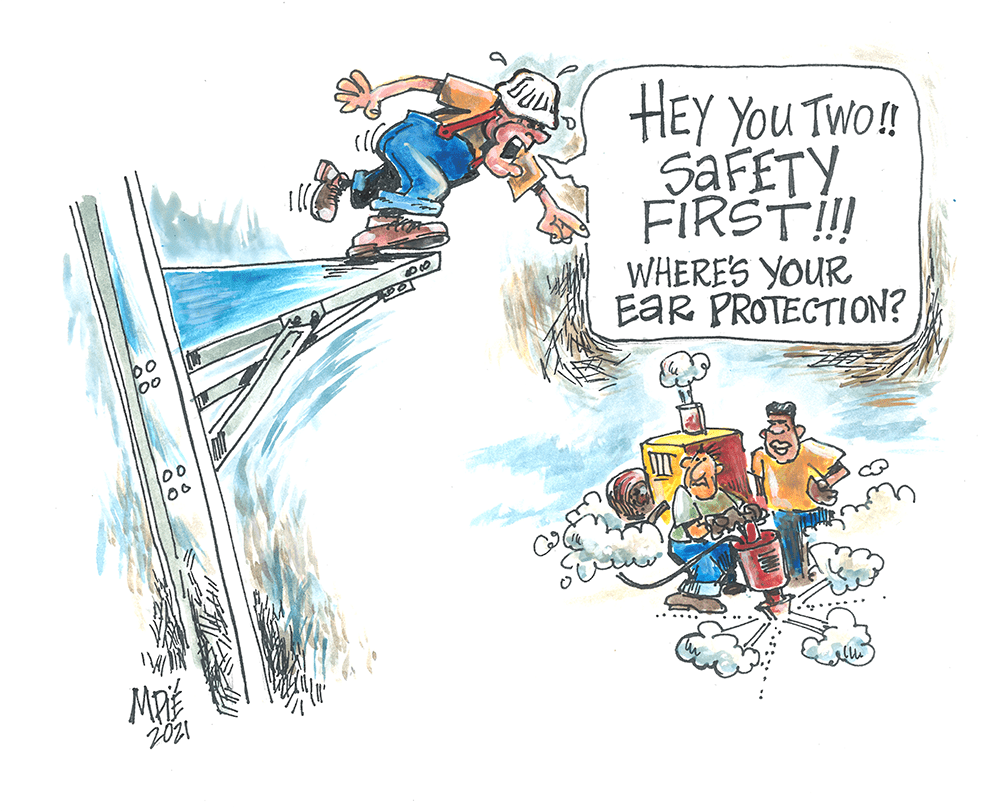We hope you are enjoying the summer and staying cool when needed. Hard to believe August is upon us and school is right around the corner. July has come and gone and is an especially noisy month. I love to watch fireworks and my husband likes to make a lot of noise blowing things up while we celebrate our country’s independence. I had my fingers in my ears for much of the month. Additionally, I was glad I remembered my hearing protection while enjoying Maverick at Tinseltown Theater on a discount Tuesday. Using hearing protection helps prevent noise-induced hearing loss.
Did you know that noise-induced hearing loss (NIHL) is the only type of hearing loss that is typically preventable? It can happen at any age and is potentially permanent. Surprisingly, noise-induced hearing loss has affected as many as 16% of teens (12-19) which historically has not been an age group we have been concerned about. Earbuds and hours of listening is the primary cause. Noise-induced hearing loss is caused by damage to the inner ear’s hair cells which normally convert sound into signals the brain understands.
Fast Facts About Noise-Induced Hearing Loss
At Hearing Solutions of North Carolina, we are dedicated to educating you, your loved ones and colleagues on how to safeguard those sensitive hair cells integral to processing precious sounds. You should know which loud noises can cause damage, wear ear protection as necessary and have periodic hearing tests. Be aware that males and those who smoke or have diabetes have increased risk for noise-induced hearing loss. Additional risk factors for NIHL include diet, cardiovascular disease, and genetic factors. At home, work and play we are surrounded by loud sounds every day. By practicing healthy habits, an ounce of prevention is truly worth a pound of cure.
Since NIHL is the only preventable type of hearing loss, learning more and staying safe will be music to your ears. Noise is measured in decibels (dB)-the relative loudness of sounds in the air as perceived by the human ear. Noise-induced hearing loss may be caused by how loud the noise is (dB) and how long you hear the noise (duration).
Preventing noise-induced hearing loss
So how do you know when a sound is too loud?
You can always measure it. There are several apps that you can load on your phone to make sound measurements. I have several on my phone, but my favorite free download is “Decibel X”. Anything over 85dB can be damaging, especially when you are exposed for a longer period.
An easier method we use at my home is the talk loud above the noise method. Not very scientific, but, easy. My theory is better safe than sorry. So, if something is running, such as a mower, chainsaw, hedge trimmer, saw, etc. and I am talking louder than normal to communicate with my husband then it’s time to grab my hearing protection. We have several sets of earmuffs hanging in the garage, shop and even in the kitchen while I grind my smoothies for my morning breakfast.
Healthy Hearing Checklist:
- Know which noises can cause damage (those at or above 85dB).
- Protect the ears of children too young to protect their own.
- If you can’t reduce the noise or protection yourself, move away from it.
- Wear earplugs or other protective devices.
- Know that disposable earplugs are for one-time use only.
- Have your hearing screened if you think, or someone else thinks you might have hearing loss.
To schedule an appointment for your hearing screening or to determine which type of hearing protection is right for you, give Jamie or Diane a call at 704-633-0023. Remember to visit our website: www.hearingsolutionsofnc.com. Jane, Cheryl, and I look forward to seeing you soon.

